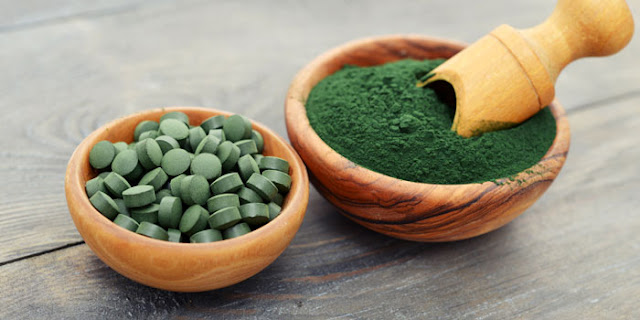Spirulina: The Greatest Super Food On Earth?
Spirulina has been used as food for centuries by different
populations and rediscovered in recent years. Its impressive protein content
and rapid growth in the entirely mineral environment have attracted the
attention of both researchers and industrialists alike. As a part of more
detailed analysis, a number of features of particular interest from the nutritional
standpoint have been demonstrated: a balanced protein composition, the presence
of rare essential lipids, and numerous minerals.
In 1967, spirulina was established as a “wonderful future
food source” in the International Association of Applied Microbiology (Sasson,
1997). Further analysis of the nutritional properties of spirulina showed an
exceptionally high protein content of around 60–70% of its dry weight. The UNO
in the year 1974, during its World Food Conference declared Spirulina “the best
food for tomorrow”. The WHO (World Health Organization) has called Spirulina as
“the greatest super food on earth” and the NASA scientists have found during
research, that 1 kg of Spirulina nutritionally equals to 1000kgs of the
assorted vegetables.
Spirulina is not only used as a human source, it is also
used as animal feed. Veterinarians prescribe spirulina to aid recovery,
increase stamina, relieve stiffness, and also for show animals for general
toning. Similarly, spirulina is also used extensively by aquaculture
companies to improve the growth rates, increase disease resistance, improve
survival rates, reduce medication requirements and improve quality and
coloration of various fish and shellfish.
In addition to the benefits it offers, growing demand for
natural colours, growing malnutrition, increase in number of vegan consumers,
and strict regulations against the artificial colours and flavours are some of
the major factors driving the global spirulina market significantly. However,
the low awareness of the various health benefits of spirulina and the complex
production process hinders the growth of spirulina market to some extent. The
regulatory agency of EU countries for food safety has banned the use of
synthetic colours in the products consumed in EU countries which is boosting
the growth of the natural colour market. Due to this, it is mainly used as a
food colourant, as an edible dye in ice creams and as a natural dye in the
cosmetics industry. The other applications where spirulina is adopted are Food
and beverage, Nutraceuticals, and Pharmaceuticals.
Spirulina is approved and recommended by the World Health
Organization to governments across the world to combat malnutrition.
Malnutrition is the major cause of morbidity in developing countries and cause
of death in children who are less than five years. According to the Global
Alliance for Improved Nutrition (GAIN), around 2 billion people in the world
suffer from various forms of malnutrition. It is responsible for the death of
around 2.6 million children each year – a third of child deaths globally. The
bodies of many children across the globe fail to develop fully as a result of
malnutrition. For instance, 1 in 4 of the world’s children are stunted; in
developing countries this is as high as one in three. These statistics
indicates the growing need to eradicate malnutrition and spirulina can be of
great food to do so as it has all the nutrients necessary to fight against
malnutrition.
Meticulous Research® has analyzed the market potential
for spirulina in its recently published study, titled, “Global Spirulina Market
Outlook- 2017-2022”. The full report can be accessed at-



Comments
Post a Comment